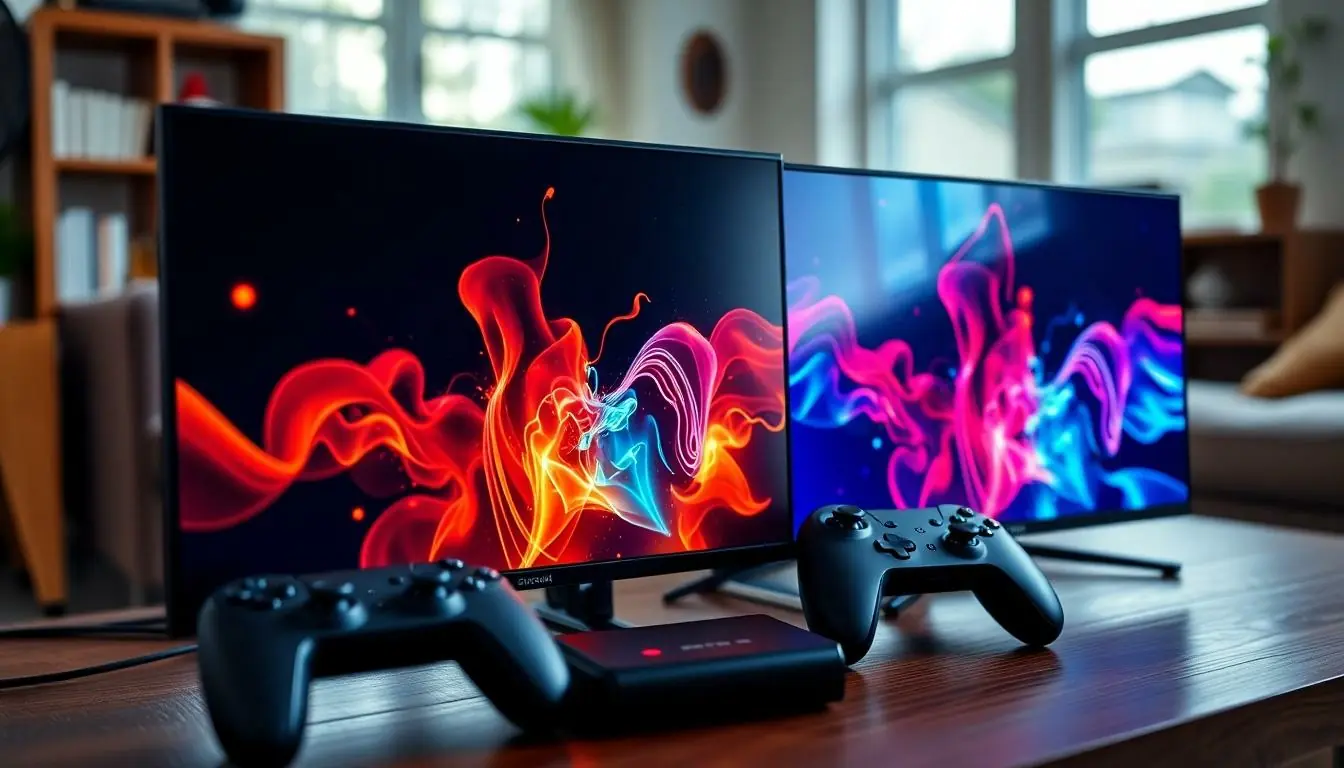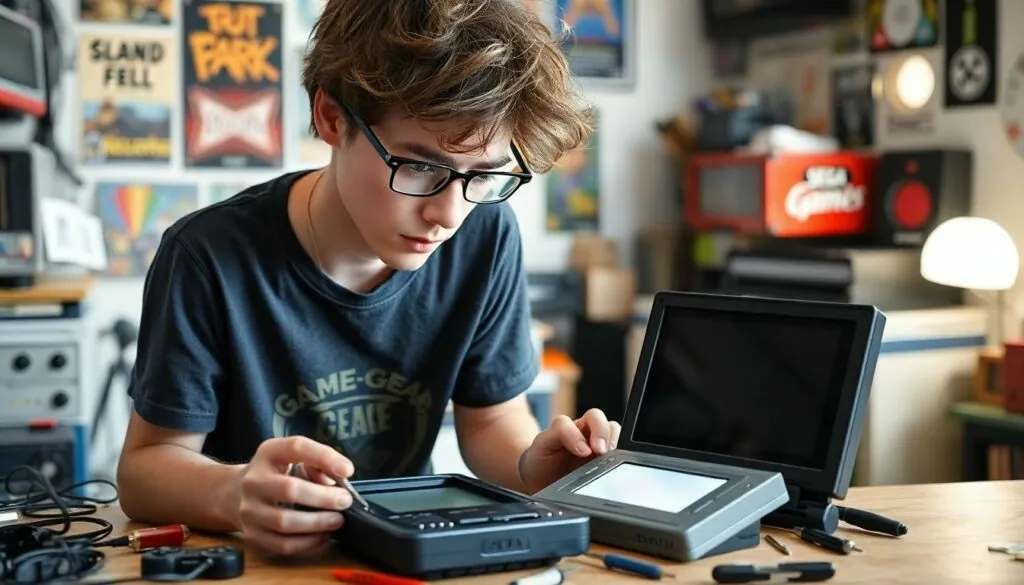Table of Contents
ToggleImagine this: you’re all set for a nostalgic gaming marathon, but your beloved Game Gear’s screen looks like a kaleidoscopic mess. Instead of reliving the glory days of Sonic and Tails, you’re squinting at a pixelated puzzle. It’s time for a screen replacement!
Overview of Game Gear Screen Replacement
A malfunctioning screen can severely diminish the enjoyment of classic gaming. Replacing the screen offers a way to revive the original experience.
Importance of Screen Replacement
Screen replacement plays a crucial role in restoring gaming functionality. A clear, vibrant display enhances visual quality, ensuring an immersive experience. Gamers often notice improved contrast and brightness with a new screen. While some may see it as just an upgrade, it directly impacts gameplay enjoyment and can benefit other components too. Restoring the screen also extends the lifespan of the device, making it a worthwhile investment for enthusiasts and collectors.
Common Problems with Original Screens
Original screens frequently exhibit several issues that negatively affect gameplay. Screen flickering can disrupt immersion, causing frustration during visually intense moments. Dead pixels or discoloration often appear over time, leading to diminished clarity in visuals. Moreover, excessive wear and tear can lead to permanent damage. Battery drain arises more quickly with failing screens due to increased power demands. These problems not only hinder gameplay but also impact the overall experience of classic games.
Types of Replacement Screens

Choosing the right replacement screen significantly impacts the gaming experience. Understanding the types available assists in making an informed decision.
LCD vs. OLED Screens
LCD screens utilize liquid crystal technology, offering vibrant colors and acceptable brightness levels. Gamers appreciate their energy efficiency and affordability. With OLED screens, deep blacks and remarkable contrast levels come into play, creating stunning visuals. These screens provide wider viewing angles, enhancing multiplayer gaming. However, OLEDs can be pricier compared to their LCD counterparts and incur a slight risk of burn-in if static images linger too long.
Advantages and Disadvantages
While LCD screens are generally more cost-effective, they tend to have slower response times. This sluggishness may result in more motion blur during fast-paced games. LCD screens can provide solid reliability and lower power consumption. In contrast, OLED screens deliver superior display quality with sharper images, attracting enthusiasts. Price points vary significantly, making budgeting an essential consideration for gamers. Potential burn-in issues also prompt caution, particularly for those who play games with static interfaces for extended periods.
Replacement Process
Replacing a Game Gear screen requires careful attention and specific tools to ensure a successful outcome. Following a structured process makes the task manageable and efficient.
Tools and Materials Needed
To begin, gather essential tools and materials. A small Phillips screwdriver aids in removing screws, while tweezers help with delicate components. An opening tool, such as a plastic spudger, allows access to internal parts without damaging the casing. New screens can be purchased online or from specialty stores. Additionally, adhesive tape is necessary for securing the new screen in place. A microfiber cloth keeps components clean during the replacement process. Having a workspace with good lighting improves visibility and precision.
Step-by-Step Guide to Replacing the Screen
Start by powering down the Game Gear and removing the battery. Next, use the screwdriver to take out screws from the back panel. Once the panel is detached, carefully detach the old screen from the circuit board with the opening tool. Afterward, position the new screen and connect it to the board. Secure the screen with adhesive tape, ensuring a firm fit. Reattach the back panel and replace the screws to finalize the assembly. Finally, power on the device and verify that the new screen operates correctly.
Where to Buy Replacement Screens
Finding replacement screens for Game Gear devices requires checking reliable sources. Several options provide quality products to enhance the gaming experience.
Online Retailers
Online retailers offer a vast selection of replacement screens. Websites like Amazon, eBay, and specialized gaming parts stores stock various models, including both LCD and OLED screens. Customers benefit from customer reviews, helping them assess product quality. Price comparisons between sellers often lead to finding competitive rates. Fast shipping options cater to those eager to replace their screens quickly.
Local Game Shops
Local game shops can be a valuable resource for replacement screens. Many shops maintain a supply of parts for popular retro devices, including Game Gear consoles. Engaging with store staff usually leads to helpful advice regarding product compatibility. Some shops may even offer installation services, simplifying the replacement process. Supporting local businesses fosters community engagement while enhancing the gaming experience.
Replacing the screen on a Game Gear is more than just a fix; it’s a chance to elevate the entire gaming experience. With improved visuals and enhanced gameplay, gamers can dive back into their favorite classics with renewed enthusiasm.
Choosing the right type of screen is essential to achieving the desired quality and performance. Whether opting for an LCD or OLED, understanding the pros and cons can make all the difference.
For those ready to tackle the replacement process, following the right steps and using the appropriate tools will ensure a successful upgrade. With reliable sources for replacement screens available online and in local shops, gamers have everything they need to restore their beloved devices and enjoy countless hours of gaming bliss.







